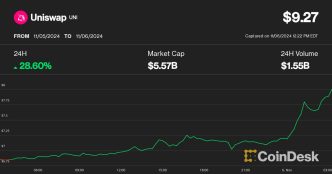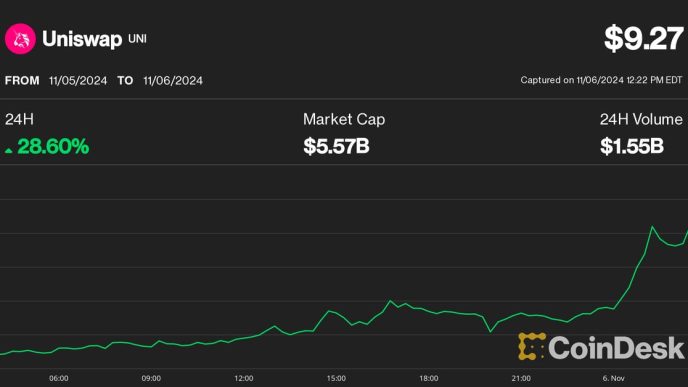Bitcoin’s price surged to new heights late Tuesday before Donald Trump was projected by media outlets to win the U.S. election. The coin is now priced at $74,555, according to CoinGecko, and jumped as high as $75,358 overnight.
But crypto-friendly Trump victory aside, history shows us that the leading digital asset is actually doing what it typically does.
The price of the biggest digital coin previously broke a new record in March, before this year’s halving in April. It was the first time that BTC had done such a thing, thanks to the influx of capital that came following the approval of 10 Bitcoin exchange-traded funds (ETFs) in the U.S.
Late Tuesday and into Wednesday, Bitcoin continued to soar—and history shows that everything is going just as expected, based on the design of Bitcoin and how that affects miner incentives and trading demand over time.
CryptoQuant’s Head of Research Julio Moreno told Decrypt that other than in 2012, when Bitcoin rapidly hit an all-time high price three months after its first halving, it has since taken approximately six months to break new records following the halvings of 2016 and 2020.
“Additionally, the performance of Bitcoin has been similar to the 2016 and 2020 halving years,” he said, adding that the virtual coin is again following familiar trends.
The halving is an event baked into Bitcoin’s code that slashes miner rewards in half, approximately every four years. The idea is that miners—who process transactions on Bitcoin’s blockchain—gradually get less BTC for their work. Fewer digital coins are released into circulation in order to keep inflation in check, potentially boosting demand amid the supply crunch.
April’s event slashed rewards from 6.25 Bitcoin to 3.125 BTC for each block that miners successfully process.
There will only ever be 21 million BTC minted, but the rate at which new coins are created is slowed down every four years.
The event is considered bullish by some industry observers because of the new highs that the asset has touched following the occurrence: Before Bitcoin’s first halving in 2012, the coin was priced at $12.35. One year later, it had hit $964.
Fast-forward to 2016, and Bitcoin was trading hands for $663 before its second halving event. One year later, it was priced at $2,500.
Bitcoin’s price was touching around $8,500 before its May 2020 halving; it jumped to a new record price above $20,000 by the end of 2020, and kept surging amid a bull run that followed in 2021, with the biggest digital coin ultimately exploding to a then-record price of $69,044 in November 2021.
“The data implies that Bitcoin would continue to rally in November/December, given the historical seasonal patterns,” added Moreno, claiming that his firm had an outlook for the price to be around between $80,000 to $90,000 in that time period.
A Trump victory was expected to help the asset—and the industry as a whole. Trump explicitly voiced enthusiasm for crypto during his campaign and vowed to protect the industry in the United States, suggesting he’d replace the crypto-critical SEC Chair, Gary Gensler. Trump even launched a decentralized finance project dubbed World Liberty Finance.
Only up from here then?
Edited by Andrew Hayward
Daily Debrief Newsletter
Start every day with the top news stories right now, plus original features, a podcast, videos and more.
Source link
Mathew Di Salvo
https://decrypt.co/290416/bitcoin-all-time-high-perfectly-timed
2024-11-06 17:22:50











